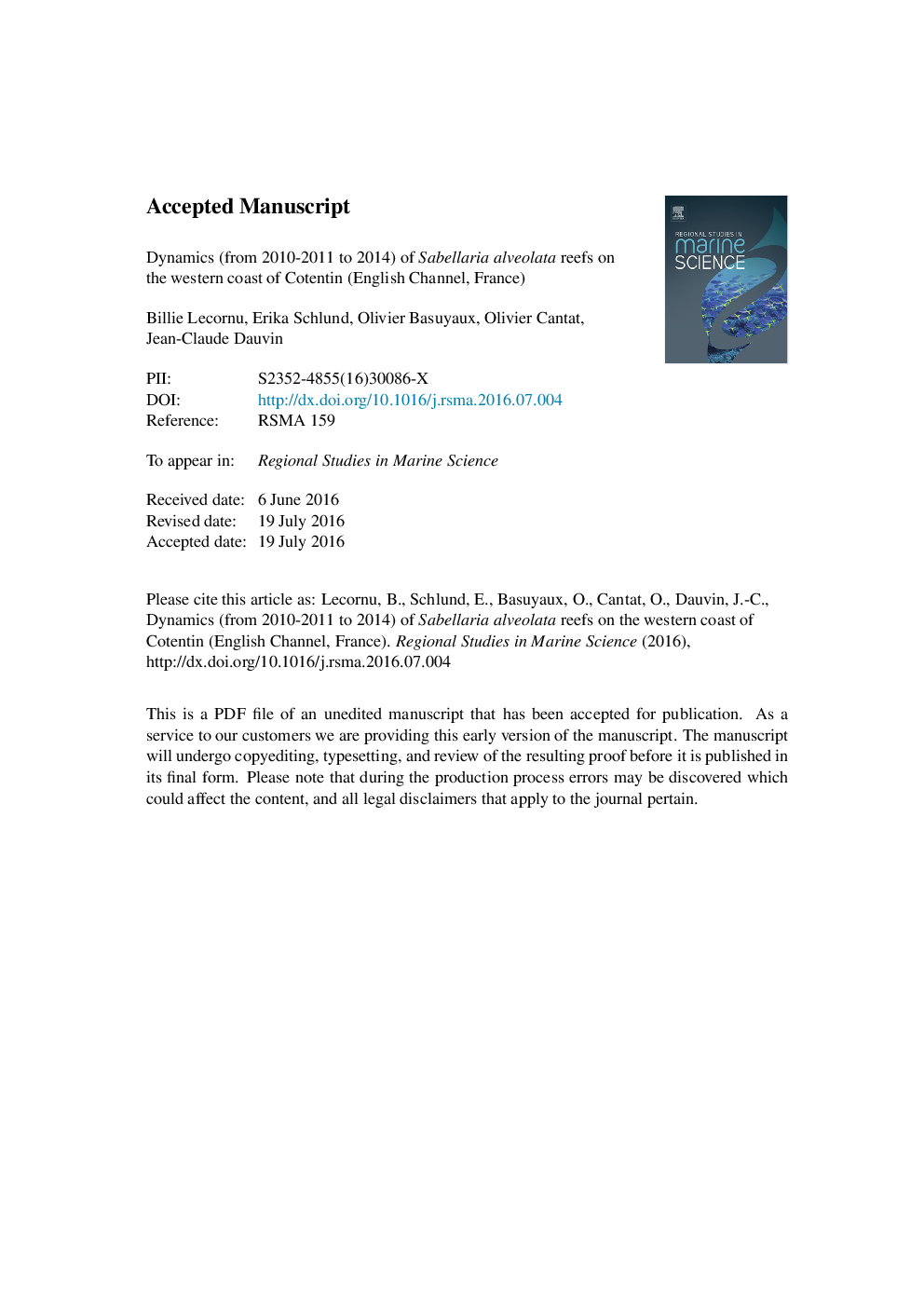| Article ID | Journal | Published Year | Pages | File Type |
|---|---|---|---|---|
| 5758135 | Regional Studies in Marine Science | 2016 | 37 Pages |
Abstract
The polychaeta Sabellaria alveolata (Linnaeus, 1767), commonly known as the honeycomb worm, is a gregarious polychaete present on the European coasts from Scotland to Portugal. It is an important reef-building species which enhances topographic complexity in colonized areas. In Europe, the most extensive reef formation is found in France in the Bay of Mont Saint-Michel. Nevertheless, since 2006, Sabellaria bio-constructions (platforms and reefs) have developed on hard substrates along the west coast of Cotentin and in the north of the Bay of Mont-Saint-Michel. The aim of this study is to compare the area covered by bio-constructions in 2010-2011 and in 2014 along 60 km of the west coast of Cotentin, focusing on the temporal changes at four target sites: Champeaux, Lingreville, Blainville-sur-Mer, and Saint-Germain-sur-Ay. The results show a very slight decrease of colonized surface-area between these two periods at the scale of the whole study area, but a significant decrease at two target sites, with considerable degradation of the bio-constructions which appear to be temporary on the west Cotentin coast. Our study also reveals the presence of flourishing permanent bio-constructions at Champeaux, which exhibit the highest densities (>40,000Â ind.mâ2). The winter size structure of S. alveolata populations on the target sites and during a winter-summer survey at Blainville-sur-Mer reflects the absence of settlement in 2013 and 2014, and the absence of older individuals able to survive over several years. Our results suggest a haphazard transport of pelagic larvae from the S. alveolata permanent reefs in the Bay of Mont Saint-Michel, which leads to the spread of temporary reefs northwards. The evolution of these constructions can be very rapid (<10 years); it is suggested that cold winters and high-energy hydrodynamic conditions generated by strong storms have contributed to a rapid degradation of the reefs at the beginning of the 2010s.
Keywords
Related Topics
Physical Sciences and Engineering
Earth and Planetary Sciences
Oceanography
Authors
Billie Lecornu, Erika Schlund, Olivier Basuyaux, Olivier Cantat, Jean-Claude Dauvin,
